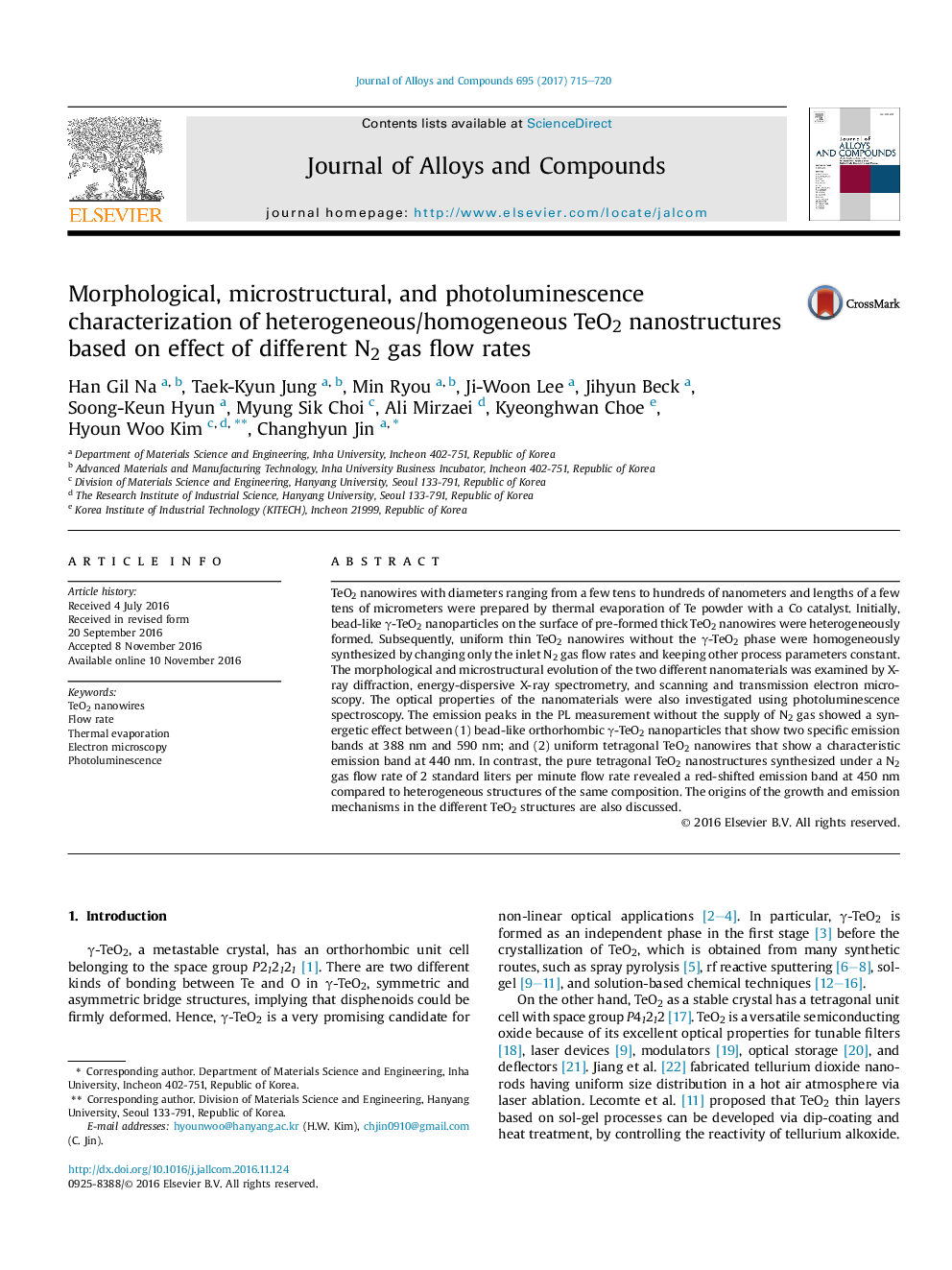| Article ID | Journal | Published Year | Pages | File Type |
|---|---|---|---|---|
| 5461449 | Journal of Alloys and Compounds | 2017 | 6 Pages |
â¢The hybrid system of TeO2-based nanostructures was investigated.â¢Two different TeO2 properties may have originated from different gas flows.â¢Morphological, microstructural, and optical transition was observed.
TeO2 nanowires with diameters ranging from a few tens to hundreds of nanometers and lengths of a few tens of micrometers were prepared by thermal evaporation of Te powder with a Co catalyst. Initially, bead-like γ-TeO2 nanoparticles on the surface of pre-formed thick TeO2 nanowires were heterogeneously formed. Subsequently, uniform thin TeO2 nanowires without the γ-TeO2 phase were homogeneously synthesized by changing only the inlet N2 gas flow rates and keeping other process parameters constant. The morphological and microstructural evolution of the two different nanomaterials was examined by X-ray diffraction, energy-dispersive X-ray spectrometry, and scanning and transmission electron microscopy. The optical properties of the nanomaterials were also investigated using photoluminescence spectroscopy. The emission peaks in the PL measurement without the supply of N2 gas showed a synergetic effect between (1) bead-like orthorhombic γ-TeO2 nanoparticles that show two specific emission bands at 388 nm and 590 nm; and (2) uniform tetragonal TeO2 nanowires that show a characteristic emission band at 440 nm. In contrast, the pure tetragonal TeO2 nanostructures synthesized under a N2 gas flow rate of 2 standard liters per minute flow rate revealed a red-shifted emission band at 450 nm compared to heterogeneous structures of the same composition. The origins of the growth and emission mechanisms in the different TeO2 structures are also discussed.
